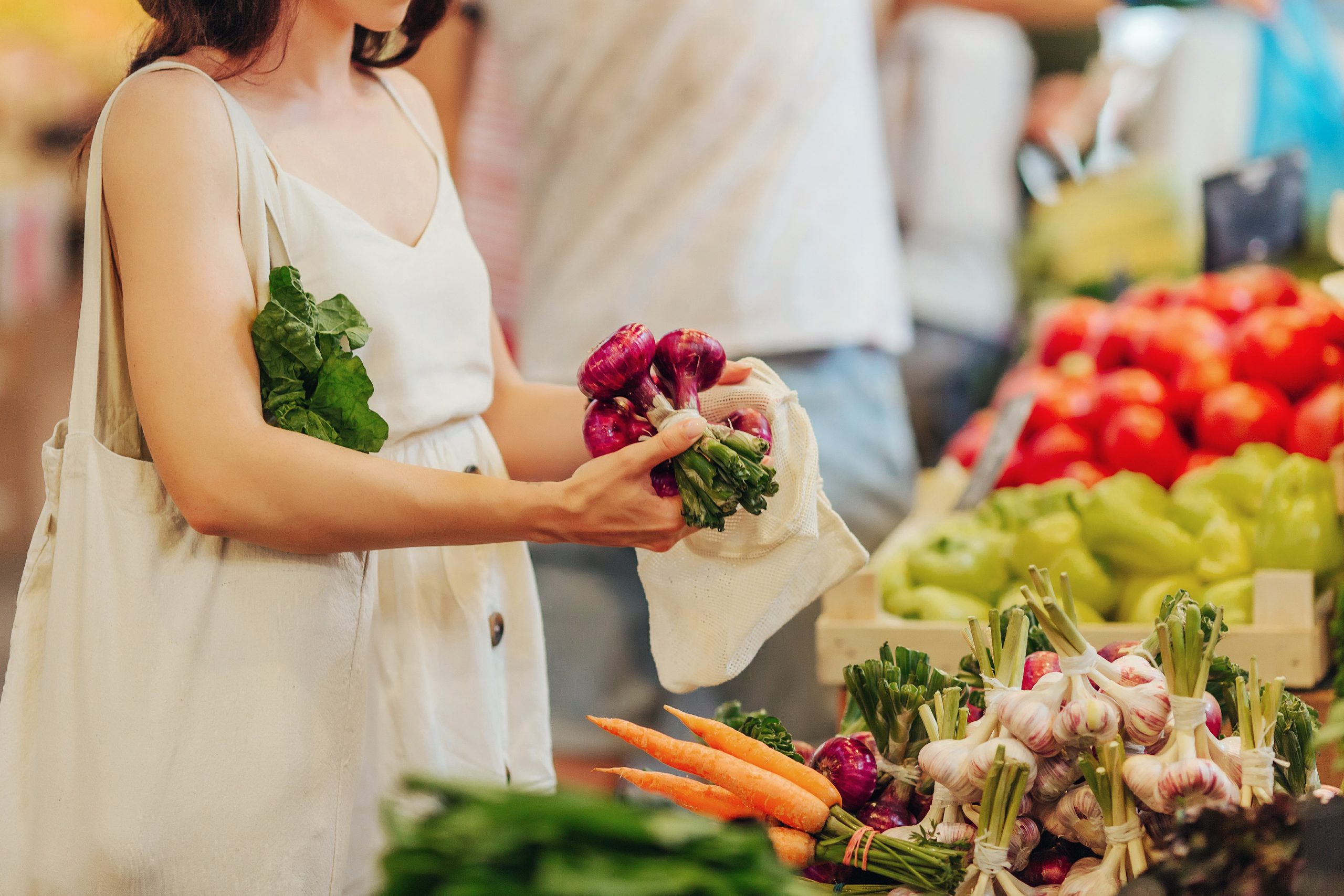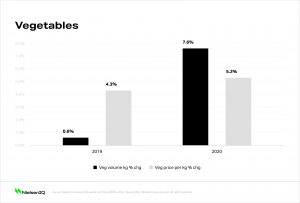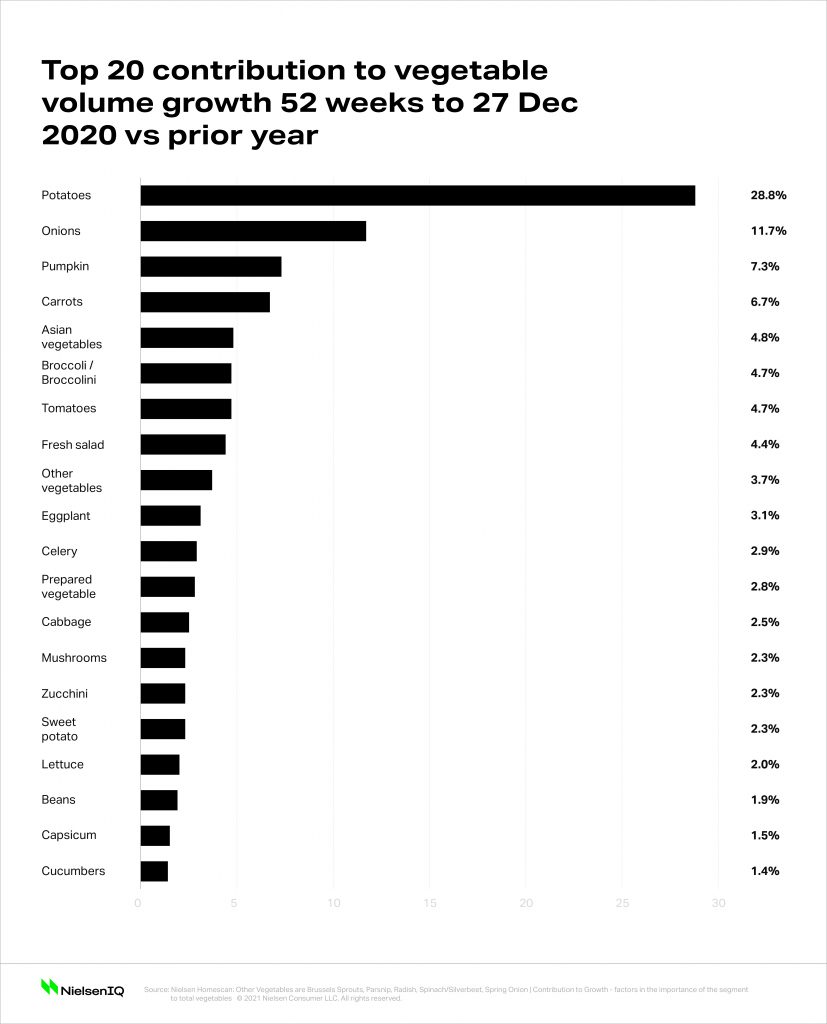Harvest to Home COVID-19 trends – fresh produce annual wrap-up of 2020
As part of the Hort Innovation-funded Harvest to Home project, global information and measurement company Nielsen has produced a comprehensive wrap-up of the trends on the fresh produce industry following the impacts of the COVID-19 pandemic. AUSVEG presents a summary of the report.
Fresh produce trends
- Total grocery sales reached a three-year high during COVID with fresh categories taking out the top five growth contributors.
-
- Grocery was the beneficiary of increased at home consumption to the detriment of food service.
- Bigger baskets, increased frequency and an increase in the repertoire of shops visited featured strongly in 2020.
- Benefiting from more meals at home, vegetables flourished last year with a three-year volume high; however, fruit fared less well and declined 4.7% on year ago.
- Longer lasting vegetables – important to shoppers during the early months of COVID-19 – took out the top four spots contributing the most to vegetable volume growth.
- Victoria, burdened with the longest period of lockdown, contributed the most to produce growth.
- Assisted by an increase in shop repertoire and consumers shopping more locally, other supermarkets such as IGA, Costco and Asian grocers, picked up share in 2020 to the detriment of major supermarkets.
2021 Produce Predictions
- Home cooking – Consumers will continue the trend of more home cooking. Ready-to-eat produce solutions that add interest to the ‘what’s for dinner’ question will supplement sales.
- Food as medicine – Consumers will prioritise health and wellness – fresh produce can capitalise on this with on-pack messaging highlighting key benefits (e.g., gut health, immunity boosting).
- E-commerce – Consumers will continue to purchase through this growing channel having experienced the convenience during COVID. Having an online strategy in addition to your Bricks & Mortar strategy will be important for 2021.
- Pre-packed vs loose – Pre-packed produce will continue to grow as a format, appealing to both convenience and safety concerns of consumers. Sustainability of packaging will be a future focus for industry.
Find out more
Please visit the Harvest to Home website to read the full report.
These data and insights were produced independently by Nielsen and shared through the Harvest to Home platform, supported through the Hort Innovation vegetable, sweetpotato and onion research and development levies. For more insights, visit harvesttohome.net.au.
The Harvest to Home dashboard is an initiative of the Vegetable Cluster Consumer Insights Program and is funded by Hort Innovation using the vegetable, sweetpotato and onion research and development levies and contributions from the Australian Government.
Project Number: MT17017
This article features in the autumn 2021 edition of Potatoes Australia. Click here to read the full publication.




